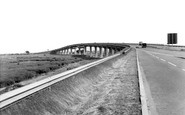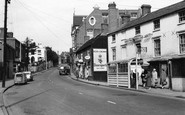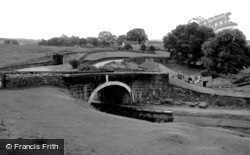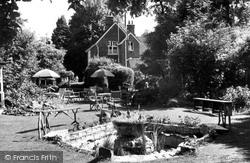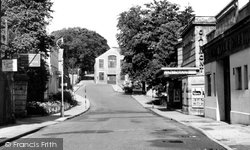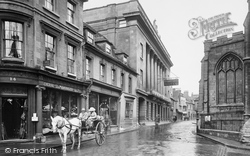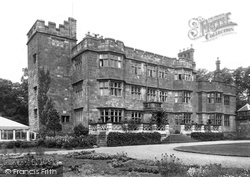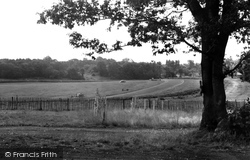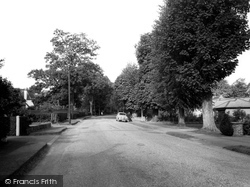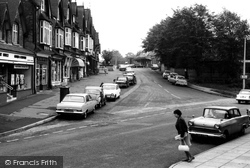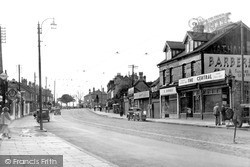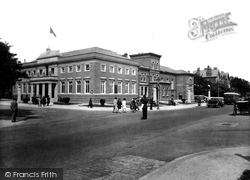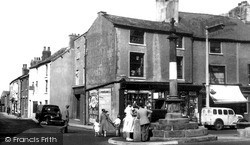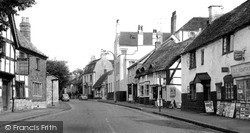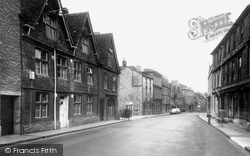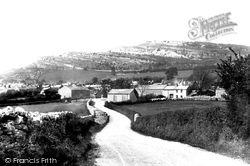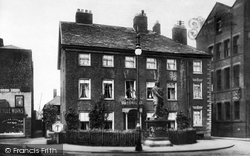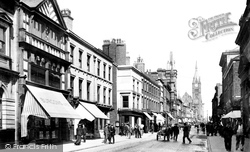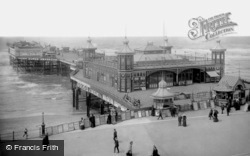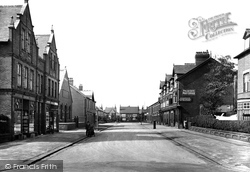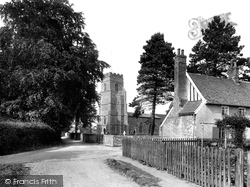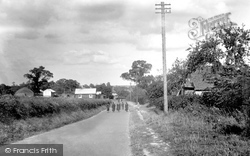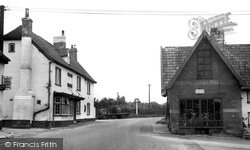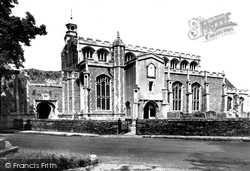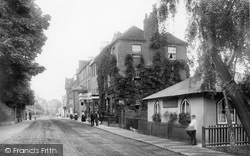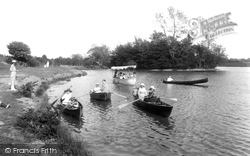Places
36 places found.
Those places high-lighted have photos. All locations may have maps, books and memories.
- Shanklin, Isle of Wight
- Ventnor, Isle of Wight
- Ryde, Isle of Wight
- Cowes, Isle of Wight
- Sandown, Isle of Wight
- Port of Ness, Western Isles
- London, Greater London
- Cambridge, Cambridgeshire
- Dublin, Republic of Ireland
- Killarney, Republic of Ireland
- Douglas, Isle of Man
- Plymouth, Devon
- Newport, Isle of Wight
- Southwold, Suffolk
- Bristol, Avon
- Lowestoft, Suffolk
- Cromer, Norfolk
- Edinburgh, Lothian
- Maldon, Essex
- Clacton-On-Sea, Essex
- Norwich, Norfolk
- Felixstowe, Suffolk
- Hitchin, Hertfordshire
- Stevenage, Hertfordshire
- Colchester, Essex
- Nottingham, Nottinghamshire
- Bedford, Bedfordshire
- Bury St Edmunds, Suffolk
- Aldeburgh, Suffolk
- St Albans, Hertfordshire
- Hunstanton, Norfolk
- Chelmsford, Essex
- Bishop's Stortford, Hertfordshire
- Peterborough, Cambridgeshire
- Brentwood, Essex
- Glengarriff, Republic of Ireland
Photos
9,106 photos found. Showing results 14,701 to 9,106.
Maps
181,006 maps found.
Books
11 books found. Showing results 17,641 to 11.
Memories
29,052 memories found. Showing results 7,351 to 7,360.
Rydal Avenue Winton Eccles
Hi, my name is Roy Mozley & I was born in 1948 in a prefab in Rydal Avenue, Winton. We then moved to Lambton St, Winton. This was our football pitch then, main problem was this guy who, lets say, used to visit a ...Read more
A memory of Eccles in 1950 by
Pitch Place House
Hi, does anyone have any photos or info on the very grand, old, large manor house in Worplesdon, in the 1920's era or earlier? I believe it was the home of Lord and Lady Dewvine (not sure that is the correct spelling). My ...Read more
A memory of Worplesdon in 1920 by
Born In Ridley
My name is Christine Wright, formerly Edwards. I was born at No 2, Council Holdings at Ridley, in December 1958. I went to Ridley Primary School and then to Nantwich and Acton Grammar School, after passing my 11-plus in ...Read more
A memory of Ridley by
Clare Boys School
I also, was a student at Clare School in Brymton. I attended (if I recall correctly) from 1960 to 1963. The headmaster was Mr Robinson, some of the other 'masters' names were Mr Hemmings, Major Burns and Mr Gall. A ...Read more
A memory of Brympton D'Evercy by
Yesterday When I Was Young
I moved to Wordsley when my father died in a tragic motorcycle accident in Old Hill, although I was born in Bradley Rd, Stourbridge in 1948. We moved to Wordsley in 57 or 58. Some of my memories are so vivid of the ...Read more
A memory of Wordsley in 1959 by
Lower Wortley
I was born in Lower Wortley, and until the reservoir was built on the ring road, can remember the ring road floading. I went to Lower Wortley school, then Thornhill which isn't there anymore, my brother and mum still live in ...Read more
A memory of Beeston in 1968 by
Growing Up In Sutton
We lived at no 6 Greenfields, Sutton. My nan lived at four with my grandad Tom - in fact it was my family which helped forge Sutton village. I remember many families; Mr and Mrs Harland who ran the village ...Read more
A memory of Sutton by
Geoff Schofield
I am posting this on behalf of Geoff Schofield: We lived on 9 Tintern Rd. Ann Mason also lived on Tintern Rd. I also ate at the same fish shop Barry Baker mentioned - apparently Thompson used to cook in coconut oil ... I went ...Read more
A memory of Middleton
William Joyce Alias Lord Haw Haw
I was talking to a man who I knew very well, he lived next to Gostelows boat yard. He was in his garden, he said to me " did you know who William Joyce was" I said "yes, I used to listen to him on the wireless in ...Read more
A memory of Boston by
Our Street
Just about every house on our estate had 2 or 3 kids which meant that there was always someone out playing. It was always football. Sometimes the odd game of marbles or on our bikes but mostly football. We'd have great fun trying ...Read more
A memory of Ouston in 1967 by
Your search returned a large number of results. Please try to refine your search further.
Captions
29,158 captions found. Showing results 17,641 to 17,664.
The Leeds & Liverpool Canal climbs out of Yorkshire into the Pennines. After these three locks at Greenberfield, there is a short summit and a tunnel before the canal descends into Lancashire.
Here we see a tea garden with a variety of seating, benches and tables - plenty of space is needed for serving coach parties. The garden pond is deep, but little water is visible.
This street was named in honour of the 8th Earl of Cork and Orrery.
This brief tour of Stamford has now climbed up to St Mary's Street to look east past the north nave aisle of St Mary's Church to the Stamford Hotel, somewhat over-large for the narrow street and towering
Situated one and a half miles north of Blythe Bridge railway station in Staffordshire, Caverswall's history certainly goes back to at least 1275 when Walter de Caverswell was granted a licence to crenellate
This scene is a far cry from the sight of today's crowds who now flock to the 2.65 mile circuit to witness the thrills and spills of motor racing.
Broad and leafy, it retains a handful of older houses like the mock-Tudor one we can just see on the left in this photograph.
The railway station at the back of this picture is the reason for Dorridge's existence. Until the London to Birmingham railway was built in 1852, there was no Dorridge.
The catalyst for the subsidiary settlement mentioned in the caption to N203006 was the building of two turnpike roads through Northfield, one of which was eventually to become the A38 (Bristol Road).
The building of Lytham Baths and Assembly Rooms started in 1882 midway between the Clifton Arms and the Neptune Hotel. At the same time Blackpool and Lytham were linked by the coast railway.
The shop on that corner was one of the most well-known in all Fylde: Richards the ironmonger's stocked everything that a farmer might need, plus a wide range of domestic articles.
Until the 1930s, trams ran along Prestbury High Street en route to the top of Cleeve Hill. A workman was employed to grease the rails at the sharp bend just out of sight in the distance.
Long Street, which was once known as West Street, has been the main artery of Tetbury since at least the 16th century.
Along Borwick Lane, past the wooden-shuttered windows of a Methodist chapel, is the small village of Warton.
Much of Lancashire was affected by the Civil Wars, and Warrington, an important crossing on the Mersey and chosen by the Royalist, Lord Derby for his headquarters, saw considerable action.
The town's main commercial institutions and shops occupied many of the elegant three-storey buildings along Fishergate.
Work began on Blackpool's second pier in 1867 and took less than a year to complete. Promoted as the 'pier for the masses', it was hugely popular and offered a variety of entertainments.
Even in the humbler areas of town the same high standards of planning were applied, and wide, uncluttered streets and pavements are a refreshing contrast to the standards favoured by today's developers
The 15th-century tower has flushwork patterns on the battlements and buttresses.
This looks like Sunday morning, with people either returning from the church or heading towards the chapel on the Tye. Walnut Tree is on the right, with Wayside and Apple Tree Cottage on the left.
The White Horse is a timber-framed building of 1694, later encased in Victorian brick when the far bay was added. On the left is the corner of the shop, with its penny bubble gum dispenser.
But through lack of funds the tower was never finished. John Constable made several sketches and paintings of this, his native parish church.
Sunbury-on-Thames was only incorporated into Surrey in the administrative changes which took place in 1965, but the village dates back to Anglo-Saxon times.
The Earlswood Lakes are on Earlswood Common, south of Redhill. In spite of its name, the New Pond was dug back in the 14th century, and was once a popular bathing place.
Places (6814)
Photos (9106)
Memories (29052)
Books (11)
Maps (181006)






















